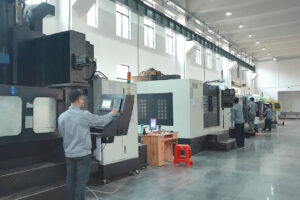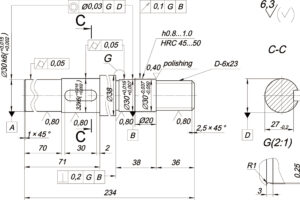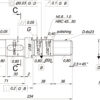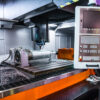- Surgical Learning Tools
While the focus of 3D printing in the medical industry has largely been on implants and medical devices used by patients, one of the largest application areas is on anatomical replicas. Historically, clinical training, education, and device testing have all relied on using animal models, human cadavers, and mannequins to gain hands-on experience with clinical simulations. But these suffer from several drawbacks, including limited supply, high processing and storage costs, lack of pathology within the models, inconsistency with human anatomy, and inability to accurately represent tissue characteristics in living humans.
Doctors are now using 3D printing models generated from patient scan data to improve disease diagnosis, clarify treatment decisions and planning, and in some cases, even implement selected surgical interventions before the actual treatment. These models help physicians understand difficult-to-visualize patient anatomy, especially when using minimally invasive techniques. Models also help in the precise sizing of medical devices. Physicians can also use the models to explain upcoming surgeries to patients and their families and to communicate surgical steps to clinical teams.
To help keep costs down, some institutions have developed procedures where surgeons can practice and plan surgeries on low-cost mannequins implanted with patient-specific 3D printed models. Combined with 3D printing’s ability to accommodate both hard and soft materials in a single part, allowing for precise replication of human tissue, calcifications, and bone, it means that surgeons can now better understand how surgery needs to be performed.
- Surgical guides and tools
Just as dies are used in manufacturing to ensure holes are placed in the exact location, doctors use guides and tools to assist in surgery. Historically, surgical guides and tools were general-purpose devices made of titanium or aluminum. By implementing 3D printing, physicians can create guides that perfectly follow a patient’s unique anatomy, precisely positioning drills or other instruments used in surgery. 3D printed guides and tools are used to enable more precise placement of restorative treatments (screws, plates, and implants) for better postoperative outcomes.
3D printing technology | most suitable application |
FDM | A variety of plastics are available, and some are sterilizable. FDM is lower strength but is well suited for iterative, low-cost prototyping to optimize tool or rail design. |
SLS | For making functional rails and tools with similar strength to injection-molded nylon. Nylon PA12 is also sterilizable. |
- Implants
3D printing can generate fine mesh or lattice structures on the surface of surgical implants, which can promote better osseointegration and reduce rejection rates. Biocompatible materials such as titanium and cobalt-chromium alloys are used in maxillofacial surgery (maxillofacial and facial) and plastic surgery. The superior surface geometry produced by 3D printing increases implant survival by a factor of 2 compared to conventional products. The porosity of these 3D printed products combined with the high level of customization and manufacturing capabilities of traditional medical materials makes 3D printed implants one of the fastest-growing segments of the AM medical industry.
3D printing technology | most suitable application |
Metal 3D Printing | Very high precision and strength, capable of generating very complex geometries that precisely match the patient’s anatomical contours. Use common medical metals (titanium and aluminum). Porous surfaces and complex scaffolds can be printed. |
- Prosthetics
Typically, conventional manufacturing techniques and materials are used to produce structural parts of functional prostheses. Additive manufacturing is often implemented in the interface section by generating complex contours that perfectly fit the user’s anatomy, improving comfort and fit. AM is also applied to the outer surface of prosthetics to produce a realistic organic shell that hides the mechanical properties of the prosthesis. This also allows the wearer to fully customize their prosthesis to any design or style they prefer.
In the U.S. alone, nearly 200,000 amputations are performed each year, prosthetics cost between $5,000-$50,000, and replacement or modification is time-consuming and expensive. Because prosthetics are personal items, each must be custom-made or tailored to the wearer’s needs. 3D printing technology is now routinely used to produce patient-specific prosthetic parts that perfectly match the user’s anatomy. 3D printing technology has been used to produce a wide variety of products, from prosthetic connections that fit comfortably to users to complex, highly customized facial prostheses for cancer patients.
3D printing is also being used to create low-cost prosthetics. Typically, conventional manufacturing techniques and materials are used to produce structural parts of functional prostheses. 3D printing is often implemented in the interface section, producing complex contours that are well suited to the user’s anatomy, improving comfort and fit. 3D printing has also been applied to the outer surface of prosthetics to produce a realistic organic shell that hides the mechanical properties of the prosthesis. This also allows the wearer to fully customize the prosthesis to their preferred design or style.
3D printing technology | most suitable application |
FDM | Low cost solution for simple geometries. Very anisotropic and not suitable for most functional applications. |
SLA | Very high level of detail. Parts are fragile and therefore best suited for aesthetic applications. The parts have a smooth surface and can be painted. |
SLS | Good strength and high levels of accuracy make SLS frequently implemented in the interface portion of functional prosthetics. The shape of the mating surface in contact with the user’s anatomy is important for comfort and functionality. |
material jetting | Similar to SLA, best suited for aesthetic applications. Allows parts to be printed in full color with a high level of detail. |
Metal 3D Printing | Parts have good strength and can produce complex designs. But usually very expensive. |
- Hearing aids
To the surprise of many, hearing aids is one of the biggest success stories of AM’s continued growth. More than 10,000,000 people now wear 3D-printed hearing aids, and 97% of all hearing aids worldwide are now manufactured using AM. Not only has additive manufacturing significantly reduced the cost of custom hearing aids compared to traditional manufacturing, but the ability to produce the complex organic surfaces required for hearing aids has reduced the return rate due to ill-fitting from 40% to 10%.
To the surprise of many, hearing aids is one of the biggest success stories of continued 3D printing. More than 10 million people now wear 3D printed hearing aids, and 97% of the world’s hearing aids are made using 3D printing. 3D printing technology not only greatly reduces the cost of custom hearing aids compared to traditional manufacturing, but also reduces the return rate due to misfit from 40% to 10% due to the ability to produce the complex organic surfaces required for hearing aids.
3D printing technology | most suitable application |
SLA | The vast majority of hearing aids are produced using SLA, and its production process is very mature in the industry. A high level of detail allows for great customization, and a smooth finish improves comfort and fit. |
What are the limitations of 3D printing when applied to the medical industry?
- While the time to print a part is often much faster compared to traditional manufacturing methods, converting the scan data to generate a printable STL file still takes a significant amount of time. Therefore, for more urgent situations, such as trauma surgery, common implants or medical devices may be a more ideal solution.
- The price of desktop FDM or SLA machines is usually between $1000-$5000, while the price of high-end 3D printers (SLS, material jetting, and metal printing) is between $200,000 and $850,000. Materials for 3D printing are also currently very expensive. Currently, for these technologies, the best solution is to have the product manufactured outside.
- A good understanding of each 3D printing technology is critical and needs to be determined in the context of the expected output. Each technology has advantages and disadvantages, and the price of parts machining can vary widely.







